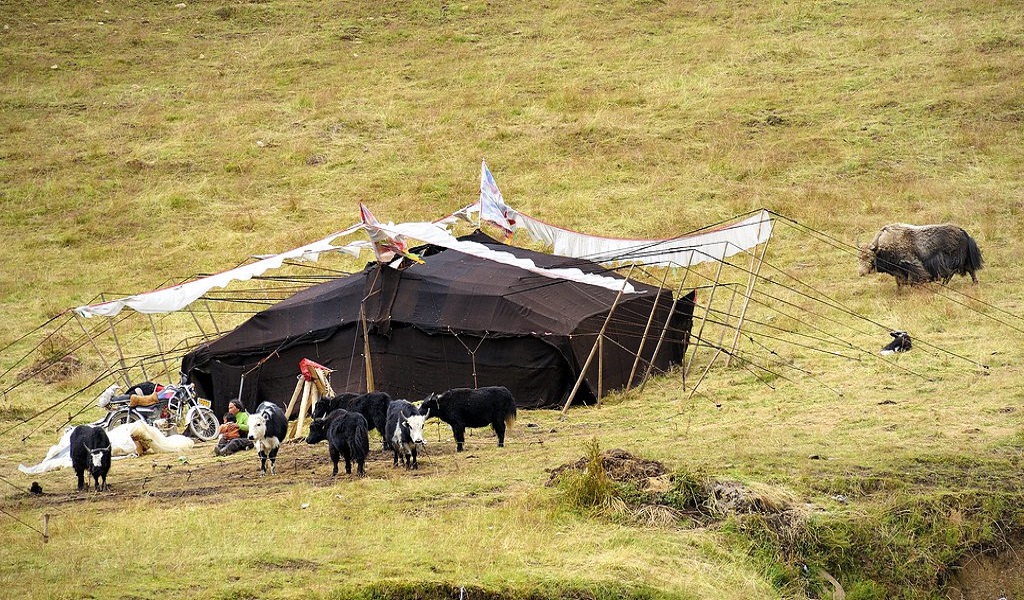The architecture of nomads has been shaped by their nomadic lifestyle, which demands portability, adaptability, and resourcefulness. Nomadic architecture has developed over thousands of years and has been influenced by various factors such as climate, geography, and cultural traditions.
Despite their constant state of motion, nomads have developed unique and sophisticated architecture that reflects their lifestyle and cultural beliefs. In this article, I will share the architecture of the nomads, looking at examples from different parts of the world.
About Architecture of The Nomads
Nomadic dwelling spaces are designed to be easily transportable, lightweight, and to provide shelter from the elements. These structures are often made from locally available materials such as animal hides, wool, and wood.
The architecture of the nomads has played a significant role in their way of life, providing them with a sense of comfort, safety, and security as they traverse vast territories in search of resources.
10 Types of Nomadic Architecture
Nomadic architecture (architecture of nomads) has been developed over centuries by people who migrate from one place to another. The structures are designed to be portable, lightweight, and easily assembled and disassembled. Here are ten examples of nomadic architecture and its characteristics.
1. Yurts (Central Asia)
Yurts are circular tents used by nomadic people in Central Asia for centuries. They are made from a wooden frame covered with felt or canvas and are easy to assemble and disassemble, making them ideal for people who move frequently.
2. Bedouin Tents (Middle East)
Bedouin tents are typically used by nomadic people in the Middle East. They are made from wool and goat hair and are designed to withstand harsh desert climates. The tents are often arranged in a circle, with the entrance facing east to protect the occupants from the prevailing winds.
3. Teepees (North America)
Teepees (tipis) are cone-shaped tents used by various indigenous groups across North America, including the Sioux and the Blackfoot. They are made from wooden poles covered in animal hides and are easy to transport and set up.
4. Ger (Mongolia)
Gers are circular tents that nomadic people in Mongolia use. They are made from a wooden frame covered with felt and are easy to disassemble and transport.
5. Lavvu (Scandinavia)
Lavvu is a tent used by the Sami people in Scandinavia. They are made from wooden poles covered in animal hides and are designed to withstand cold and windy weather conditions.
6. Black Tents (North Africa)
Nomadic people in North Africa and the Arabian Peninsula used black tents. They are made from goat hair and are designed to provide shade during the day and warmth at night.
7. Wigwams (North America)
Wigwams were used by various indigenous groups across North America, including the Algonquian and the Iroquois. They are made from wooden poles covered in bark or animal hides and are designed to be sturdy and withstand harsh weather conditions.
8. Igloos (Arctic)
Igloos are dome-shaped shelters made from compacted snow used by the Inuit people of the Arctic. They are designed to provide insulation from the cold and are surprisingly sturdy.
9. Kaavish (Pakistan)
Kaavish is a type of tent used by nomadic people in Pakistan. They are made from wooden poles and covered in woven mats made from grass or reeds.
10. Basha (Nepal)
A Basha is a type of tent used by the Gurkhas in Nepal. It is made from a tarpaulin sheet and bamboo poles and can be easily set up and taken down.
Khaima (North Africa)
A tent used by the Bedouin people in North Africa. It is made from woven goat hair and can be easily transported.
- Featured Image: The Tibetan Black Tent (Photo by reurinkjan).
In Conclusion
The architecture of the nomads is a testament to the ingenuity and adaptability of these people. Nomadic structures are designed to be easily assembled and disassembled, allowing people to easily move from one place to another.
From the yurts of Central Asia to the teepees of North America, the nomadic architecture reflects the unique cultural beliefs and practices of different peoples around the world.
- Learn More about Domes & Shelters from my blog.

